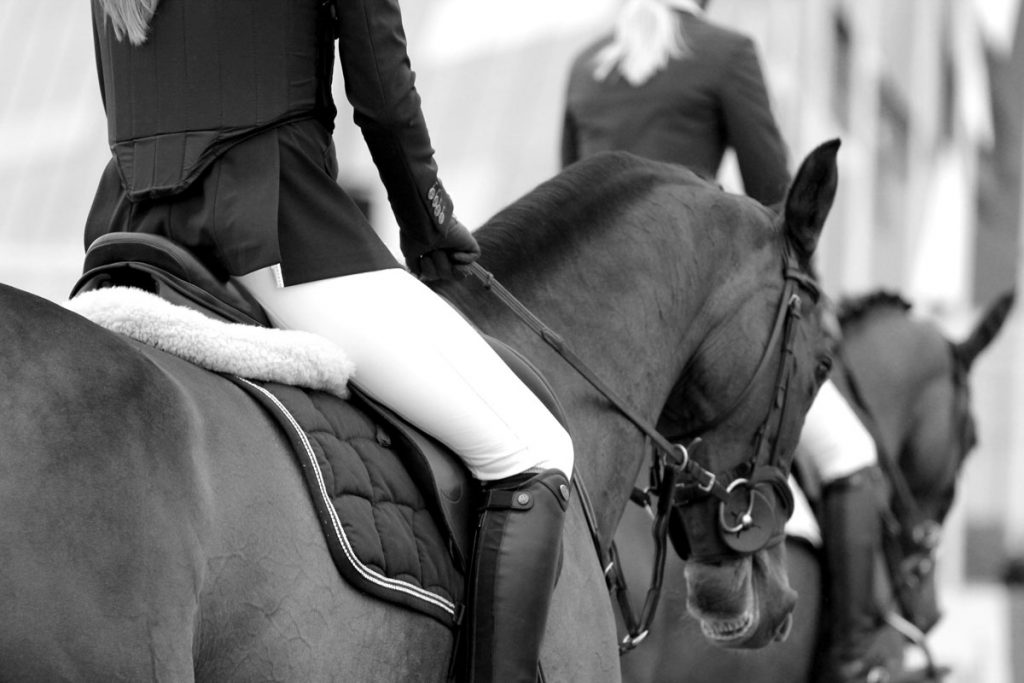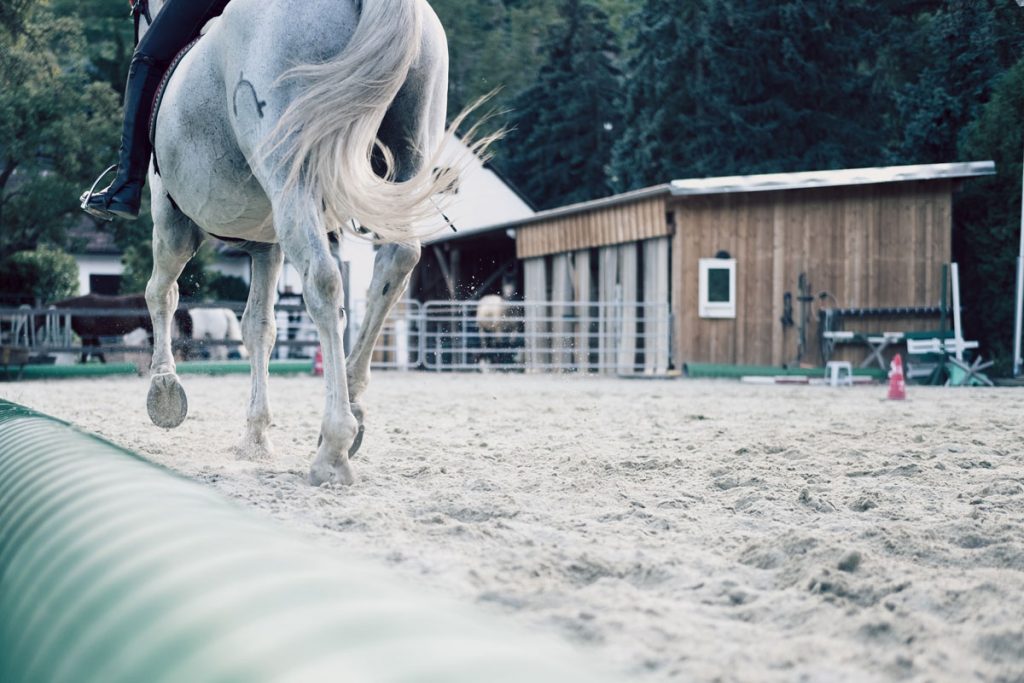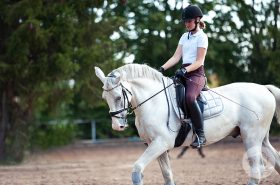Be an effective rider by training your body to sit correctly on your horse.
As a rider, your goal should be to maintain an effective seat that follows your horse’s movement. A quiet seat stays out of the way and doesn’t disrupt the horse. Eventually, you’ll learn how to encourage movement through your aids. Your body needs to carry itself properly for you to be the best rider you can be.
Enlist the help of an instructor, videotape yourself riding, and use mirrors positioned around the arena to study and develop a proper position. Some of these postures can even be practiced in front of a mirror at home. It’s essential that you identify your flaws and work to improve them, as they will stick with you your whole life.
The Head
You must have good neck muscles to carry your head properly. When they are weak, you’ll notice a bob in the head while riding. Oftentimes, riders will poke their chin out, hang their head low, or tilt it to one side. These will all cause an imbalancement. You must allow your head to come straight up from the spine. Furthermore, your eyes should stare up and in-between your horse’s ears.

The Upper Body
Starting with the shoulders, they must be supple and relaxed. Both shoulders should easily fall back and down. Be careful to not pull them up or forward. It can be helpful to draw your shoulder blades together, but don’t hollow your back. Naturally, your chest should open up as you do this.
Next, your arms should casually fall at your sides. Your elbows should hang down without being pressed against your ribs or poked out like chicken wings. If necessary, ride with a longer rein so your elbows are allowed to stay back.
Your wrists must be turned so that your thumb is on top. A straight line will follow from your elbows to your wrists when positioned correctly. Each hand will be loosely closed around the reins to form a fist. The thumbs will rest lightly on the pointer fingers.
Be sure to maintain a stable, erect position through your stomach muscles. Riding requires quite a bit of strength in this department. On the other side, the back muscles must also be well-developed. It helps to sit tall and imagine a string pulling you upward. Hollow or rounded backs will not allow you to properly influence the horse’s movement with your aids.

The Lower Body
Resting flat and loosely against the saddle, your thighs should not grip. To test yourself, kick your feet out of your stirrups and allow them to hang at the sides of your horse. Lift your legs off the saddle with your thighs no longer touching. It’s quite the workout, but when you put your feet back in the stirrups your thighs will feel stretched and elongated.
Never grip with your knees! It’s a common sign of a timid rider. And ultimately, it will push you forward and out of the saddle. Instead, allow your knees to rest lightly against the saddle without pressure. They should also be kept back, in order to avoid a chair position.
Riders should never grip or squeeze their horse constantly with their calve muscles. Like the rest of your lower body, allow your calves to remain supple and relaxed. Don’t swing them forward or back excessively when giving an aid. Furthermore, be careful to not draw them up when applying pressure.
And lastly, the ankles should also be supple. Avoid pressing your heels down with force! This will create stiff ankles and harm your ability to give refined signals to your horse. Your toes should be parallel to your horse’s body. They must also point forward and slightly up.
The proper position will lead to better rides and a happier horse! Overtime, a bad seat can restrict your horse’s movement, create negative tension, and even cause soundness issues. Your body will also suffer when incorrectly positioned. Be patient and consistent. Within time, you’ll become an effective rider!
**
Emily Fought discovered her passion for horses early on in life. When she isn’t writing about them, you can find her in the barn riding. Although Emily’s background is in dressage, she enjoys cross-training and is an avid trail rider. She resides in Northwestern Pennsylvania with her husband and small dog. Together, they own and operate Humblewood Farm.



